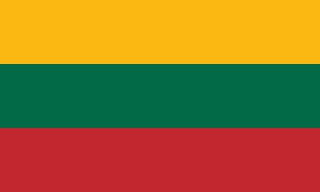Discover a comprehensive overview of maritime information concerning Lithuania. This Baltic country, bordered by the Baltic Sea, has a strategic port network, notably with the Klaipėda port, which is crucial for international trade. Lithuania plays a key role in regional maritime transport, supporting a significant flow of goods and passengers. Here you will find data on its port infrastructures, maritime economic challenges, and the geographical conditions that influence its navigation. An essential guide to understanding the maritime importance of Lithuania in the Baltic Sea region.

Explore the strategic ports and maritime infrastructure of lithuania

Essential maritime information about Butinge Marine Terminal Port port for sea professionals

Essential maritime information about Kaunas Port port for sea professionals

Essential maritime information about Klaipeda Port port for sea professionals

Essential maritime information about Kaunas Port port for sea professionals

Essential maritime information about Vilnius Port port for sea professionals
Explore the strategic ports and maritime infrastructure of lithuania
Lithuania, located on the eastern coast of the Baltic Sea, holds notable strategic importance in the maritime domain. Its coastline, although relatively short, is a key point for trade and maritime activities in the Baltic region. The country mainly relies on the port of Klaipėda, its only major seaport, which handles a large share of freight traffic to and from Lithuania as well as to neighboring countries. This well-equipped port is a major logistics center that accommodates vessels of various sizes and types, including container ships, oil tankers, and roll-on/roll-off vessels.
The port of Klaipėda is the only deep-water port in Lithuania and plays an essential role in the maritime connectivity of the region. It is located on the southwest coast, in the Klaipėda bay, offering direct access to the Baltic Sea. This maritime port serves not only Lithuania but also significantly contributes to trade exchanges with neighboring countries such as Latvia, Estonia, Poland, and Sweden. Thanks to modern infrastructures and efficient management, it is capable of handling a wide range of goods, from agricultural products to industrial cargoes, thus strengthening the local and regional economy.
The port is also an important transit point for hydrocarbons, with specific facilities for handling and storing oil and liquefied gas. The port authorities place particular emphasis on maritime safety, environmental protection, and the quality of services offered to maritime operators.
Lithuania is situated in a region where maritime geopolitics is dynamic, with maritime security being a priority given the proximity to various exclusive economic zones (EEZs) and intense maritime traffic. Besides trade, fishing plays a significant economic role, with strict regulations to ensure the sustainability of fish stocks. Varied climatic conditions, especially in winter with ice formation, affect navigation, sometimes requiring the use of icebreakers to maintain port access.
The country also invests in the sustainable development of maritime transport, promoting the use of ecological technologies. Finally, Lithuania is active in international maritime cooperation, participating in regional initiatives aimed at ensuring security, marine environmental protection, and effective management of marine resources. This highlights the country's commitment to balanced and responsible maritime development.